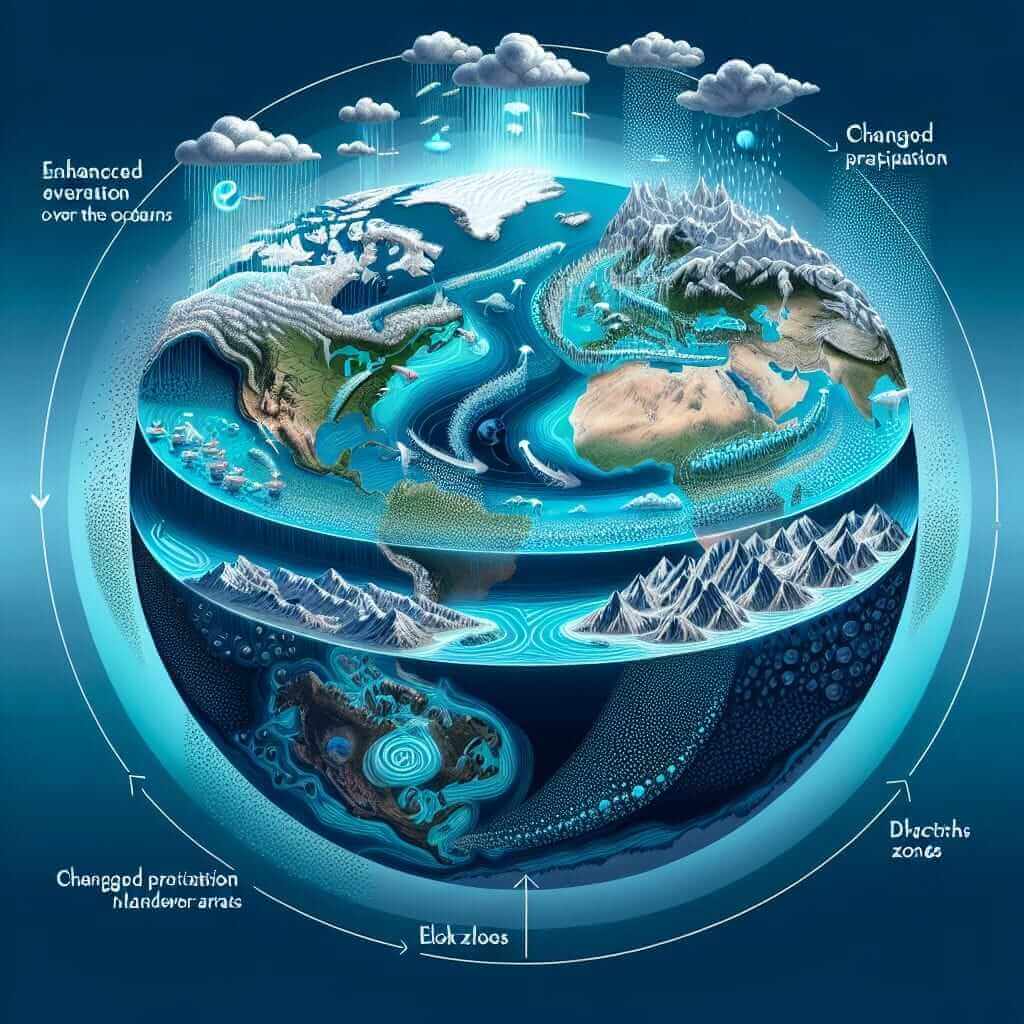Preparing for the IELTS Reading section can be challenging, especially when it comes to topics of contemporary global interest such as climate change. Recent years have shown a growing focus on environmental issues, making “What are the effects of climate change on water resources?” a relevant and possibly recurrent topic in the IELTS exam. This article aims to provide a detailed reading passage, questions, answers, vocabulary, and tips to help you master this topic in the IELTS Reading section.
Reading Passage: Medium Text
Water resources are crucial for human survival, and climate change significantly impacts these precious reserves. As global temperatures rise, hydrological cycles intensify, leading to drastic changes in water availability, quality, and distribution. This reading passage will explore the multifaceted effects of climate change on water resources.
The Effects of Climate Change on Water Resources
Climate change impacts water resources through various mechanisms, some of which may seem counterintuitive. Rising temperatures lead to an increased evaporation rate, reducing surface water levels in lakes, rivers, and reservoirs. Glaciers, which store freshwater in a frozen state, are rapidly melting, causing both a rise in sea levels and a depletion of freshwater resources. Additionally, the pattern of precipitation is changing, with some areas experiencing more intense and frequent rainfall while others face prolonged droughts.

Saltwater Intrusion: Another critical issue is saltwater intrusion into coastal freshwater aquifers. As sea levels rise, saltwater penetrates further inland, contaminating freshwater supplies and rendering them unsuitable for drinking or agriculture.
Water Quality: Climate change affects water quality as well. Higher temperatures can foster the growth of harmful algal blooms in lakes and reservoirs, which release toxins that are hazardous to human health. Moreover, heavy rainfall can lead to increased runoff, carrying pollutants from urban and agricultural areas into water bodies.
Water Accessibility: Climate change also influences the accessibility of water resources. In regions dependent on glacial meltwater, the initial increase in water flow due to glacial melting provides temporary relief but often leads to water scarcity in the long term as glaciers shrink. Furthermore, altered weather patterns can disrupt traditional water supply systems, making it challenging to manage and distribute water efficiently.
Adaptation Measures: Governments and organizations worldwide are working to adapt to these changes. Strategies include developing more efficient irrigation systems to cope with water scarcity, constructing reservoirs to store excess rainwater, and investing in desalination plants to convert seawater into freshwater. Additionally, protecting and restoring wetlands can help in natural water filtration and storage, serving as a buffer against extreme weather events.
Questions
Multiple Choice
-
Which of the following is a direct effect of climate change on water resources?
a) Decreased evaporation rates
b) Increased surface water levels
c) Intensified hydrological cycles
d) Reduced glacial melting -
How does saltwater intrusion impact freshwater supplies?
a) It increases the availability of freshwater for agriculture.
b) It contaminates freshwater, making it unsuitable for drinking.
c) It reduces the sea levels.
d) It fosters the growth of harmful algal blooms.
Identifying Information: True/False/Not Given
-
Climate change has led to an increase in the number of harmful algal blooms. (True/False/Not Given)
-
All regions globally are experiencing the same changes in precipitation patterns due to climate change. (True/False/Not Given)
Matching Information
-
Match each impact with its description:
a) Higher temperatures
b) Melting glaciers
c) Increased rainfalli) Leads to the growth of harmful algal blooms.
ii) Causes temporary water relief followed by long-term scarcity.
iii) Results in more runoff carrying pollutants into water bodies.
Sentence Completion
- To cope with water scarcity, one adaptation measure is developing _____.
Answers
Answer Key
- c) Intensified hydrological cycles
- b) It contaminates freshwater, making it unsuitable for drinking.
- True
- False
- a-i, b-ii, c-iii
- more efficient irrigation systems
Explanation
- Correct answer is c) “Intensified hydrological cycles” as this is mentioned directly in the text.
- Correct answer is b) “It contaminates freshwater, making it unsuitable for drinking” which is explicitly stated regarding saltwater intrusion.
- True – The passage states that higher temperatures can foster algal blooms.
- False – The passage notes variability with some areas facing more rainfall while others have droughts.
- a-i (Higher temperatures → harmful algal blooms), b-ii (Melting glaciers → temporary relief, long-term scarcity), c-iii (Increased rainfall → more runoff with pollutants).
- Sentence completion answer: “more efficient irrigation systems” directly mentioned as a measure to cope with water scarcity.
Common Mistakes
- Misinterpreting the effects of climate change as being uniform across all regions without considering the variability discussed in the passage.
- Confusing saltwater intrusion and its impacts with other unrelated climate phenomena.
Vocabulary
- Hydrological cycles (noun): /haɪˈdrɒdʒɪkəl saɪkəlz/ – The continuous movement of water on, above, and below the surface of the Earth.
- Glaciers (noun): /ˈɡlæsiərz/ – Masses of ice that move slowly over land, storing large amounts of freshwater.
- Algal blooms (noun): /ˈælɡəl bluːmz/ – Rapid increase or accumulation in the population of algae in water systems, often recognized by discoloration.
- Desalination (noun): /diːˌsælɪˈneɪʃən/ – The process of removing salt from seawater to produce freshwater.
- Aquifers (noun): /ˈækwɪfərz/ – Underground layers of rock or sand that hold water.
Grammar Focus
- Relative Clauses: Used to add additional information about a noun without starting a new sentence.
- Example: “Glaciers, which store freshwater in a frozen state, are rapidly melting.”
- Present Participles: Used to form continuous tenses or to act as adjectives.
- Example: “Fostering the growth of harmful algal blooms.”
Recommendations for IELTS Reading Success
- Practice regularly with varied topics, especially those linked to global issues like climate change.
- Enhance your vocabulary by learning new words in context and practicing their pronunciation.
- Focus on understanding different types of questions and develop strategies to tackle each.
- Time management is crucial – ensure to pace yourself to complete the reading within the allotted time.